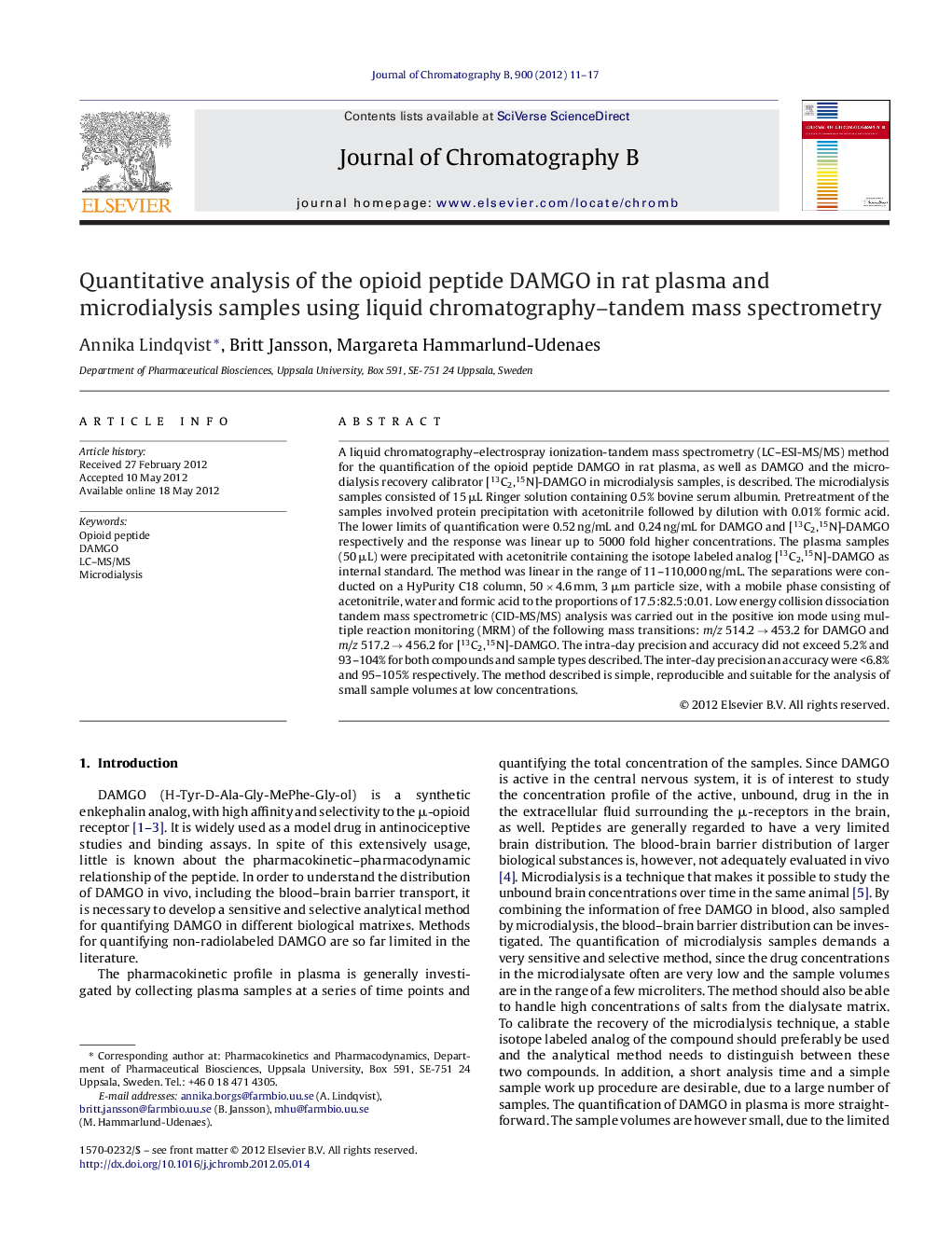| Article ID | Journal | Published Year | Pages | File Type |
|---|---|---|---|---|
| 1216907 | Journal of Chromatography B | 2012 | 7 Pages |
A liquid chromatography–electrospray ionization-tandem mass spectrometry (LC–ESI-MS/MS) method for the quantification of the opioid peptide DAMGO in rat plasma, as well as DAMGO and the microdialysis recovery calibrator [13C2,15N]-DAMGO in microdialysis samples, is described. The microdialysis samples consisted of 15 μL Ringer solution containing 0.5% bovine serum albumin. Pretreatment of the samples involved protein precipitation with acetonitrile followed by dilution with 0.01% formic acid. The lower limits of quantification were 0.52 ng/mL and 0.24 ng/mL for DAMGO and [13C2,15N]-DAMGO respectively and the response was linear up to 5000 fold higher concentrations. The plasma samples (50 μL) were precipitated with acetonitrile containing the isotope labeled analog [13C2,15N]-DAMGO as internal standard. The method was linear in the range of 11–110,000 ng/mL. The separations were conducted on a HyPurity C18 column, 50 × 4.6 mm, 3 μm particle size, with a mobile phase consisting of acetonitrile, water and formic acid to the proportions of 17.5:82.5:0.01. Low energy collision dissociation tandem mass spectrometric (CID-MS/MS) analysis was carried out in the positive ion mode using multiple reaction monitoring (MRM) of the following mass transitions: m/z 514.2 → 453.2 for DAMGO and m/z 517.2 → 456.2 for [13C2,15N]-DAMGO. The intra-day precision and accuracy did not exceed 5.2% and 93–104% for both compounds and sample types described. The inter-day precision an accuracy were <6.8% and 95–105% respectively. The method described is simple, reproducible and suitable for the analysis of small sample volumes at low concentrations.
► Analysis of DAMGO in microdialysis samples and plasma using LC–MS/MS is described. ► Plasma method was linear between 11 and 110,000 ng/mL. Sample volume was 50 μL. ► Microdialysis method was linear between 0.52 and 2600 ng/mL. Sample volume was 15 μL. ► The intra-day and inter-day precision and accuracy did not exceed 6.8% and 93–105%. ► The method was applied to determine the brain distribution of DAMGO in rat.
